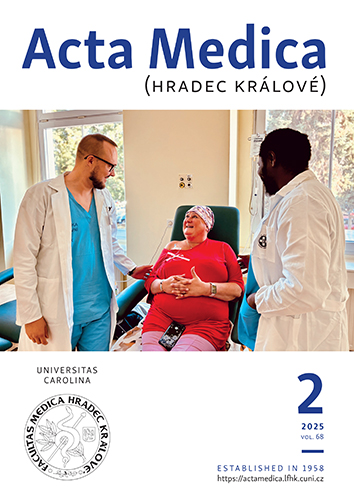ACTA MEDICA, Vol 60 No 2 (2017), 89–92
A Case of Pseudoaneurysm of the Internal Carotid Artery Following Endoscopic Endonasal Pituitary Surgery: Endovascular Treatment with Flow-Diverting Stent Implantation
Ali Karadag, Burak Kinali, Omer Ugur, Ismail Oran, Erik H. Middlebrooks, Mehmet Senoglu
DOI: https://doi.org/10.14712/18059694.2017.100
published online: 05. 10. 2017
abstract
Internal carotid artery (ICA) pseudoaneurysm is a rare complication of endoscopic endonasal surgery occurring in 0.4–1.1% of cases. Pseudoaneurysms can subsequently result in other complications, such as subarachnoid hemorrhage, epistaxis, and caroticocavernous fistula with resultant death or permanent neurologic deficit. In this case, we illustrate endovascular treatment with a flow-diverting stent for an ICA pseudoaneurysm after endoscopic endonasal surgery for a pituitary adenoma in a 56-year-old male. Surgery was complicated by excessive intraoperative bleeding and emergent CT angiography confirmed an iatrogenic pseudoaneurysm on the anteromedial surface of the ICA. The pseudoaneurysm was treated endovascularly with flow-diverting stent implantation only. Follow-up CT angiography after three months demonstrated occlusion of the pseudoaneurysm.
keywords: pituitary; injury; pseudoaneurysm; endovascular; flow diverting stent

A Case of Pseudoaneurysm of the Internal Carotid Artery Following Endoscopic Endonasal Pituitary Surgery: Endovascular Treatment with Flow-Diverting Stent Implantation is licensed under a Creative Commons Attribution 4.0 International License.
210 x 297 mm
periodicity: 4 x per year
print price: 150 czk
ISSN: 1211-4286
E-ISSN: 1805-9694
